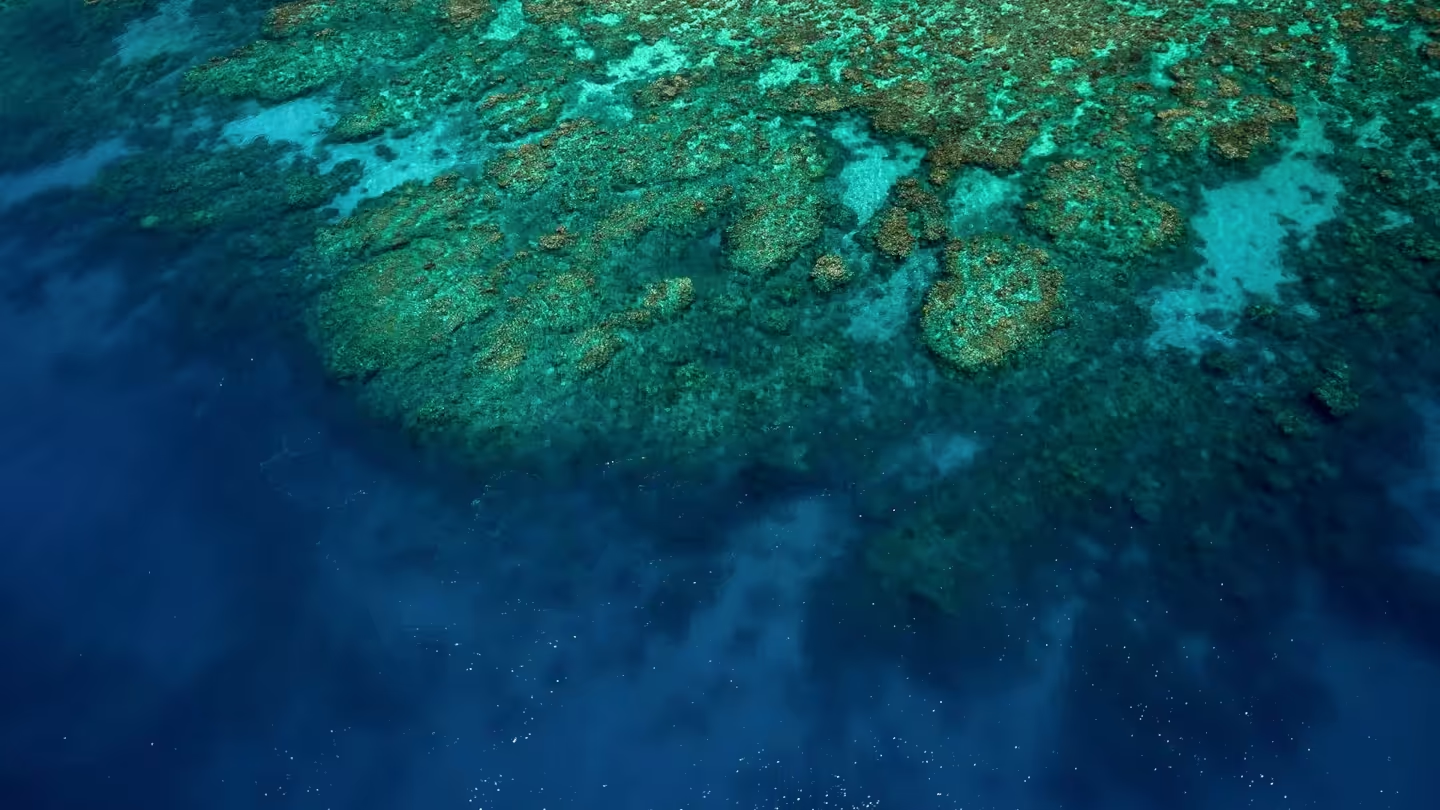The Great Barrier Reef is not one continuous reef, but made up of over 2900 reefs and 900 islands. It is the largest reef structure and marine park in the world. So large in fact that it is visible from the moon!
The GBR is approximately 2300 km (1300 miles). It begins near Papua New Guinea in the north, and continues south along the Queensland coast to Bundaberg (just north of Brisbane).
The area covered is approximately 35 million hectares - that’s about 70 million football fields!
A complex geological history
The Great Barrier Reef first began to grow about 18 million years ago. Since this time, various geological events, such as Ice Ages and low seawater levels have interrupted reef growth.
The reefs we see today have grown on top of older reef platforms during the last 8,000 years - since the last Ice Age.The Great Barrier Reef has some of the highest marine life diversity in the world, including over:
Diverse marine life
The Great Barrier Reef has some of the highest marine life diversity in the world, including over:
There are more different species of animals and plants in a cubic metre of the Great Barrier Reef than in any other environment in the world – including tropical rainforests. In fact, some reefs in the Great Barrier Reef have more different fish types than in the entire Caribbean Ocean.
